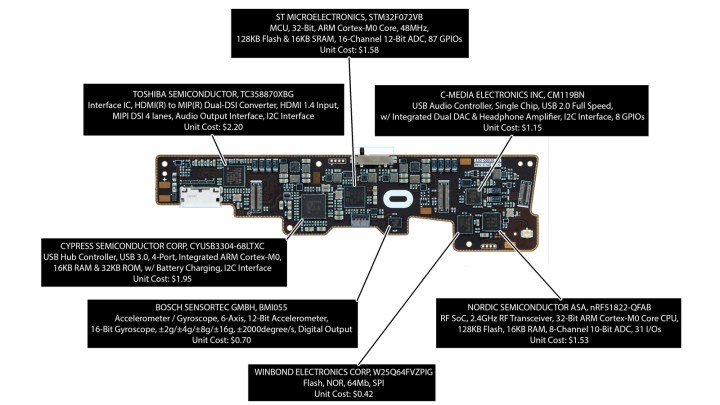
However, a new teardown from IHS Markit suggests that manufacturing the Oculus Rift is far cheaper than we were led to believe. In fact, it could be as cheap as $206 per headset, suggesting Oculus VR turned a nice profit on each sale.
The teardown is a detailed one, pricing individual chips used on each PCB based on costs straight from the official manufacturers. It covers everything from a small 64MB of flash memory, which contributed 64 cents to the overall build cost, to the two Samsung AMOLED panels used to provide the 2,160 x 1,200 resolution display, which cost just shy of $70.
Related: Oculus Rift ATV simulator is more than just a crazy video game — it could actually save lives
Clearly, Oculus shopped around for its hardware. The Rift uses components from many companies, domestic and foreign, so parts cost was a major concern for the developers. It’s not like you can chalk all of the discrepancy up to manufacturing costs, either, as IHS’ teardown factors that in, too. It also prices the wireless remote and the Xbox One controller, which incidentally are said to cost Oculus around $24.
So if the Rift was so much cheaper to put together than officially claimed, why did we end up paying upward of $600 for them?
RoadToVR brings up a few key points that IHS Markit appears to have missed. For starters, for such a detailed teardown, it’s surprising that IHS appears to have entirely forgotten about the custom fresnel lenses used in the Rift’s creation. We were told before the Rift’s release that they were custom-made, which would suggest a higher than usual cost for them.
It’s also been pointed out that the breakdown doesn’t mention the potential cost for software development to go along with the Rift, nor the years of research and development that went into its creation.



